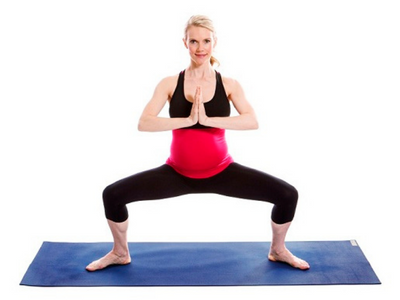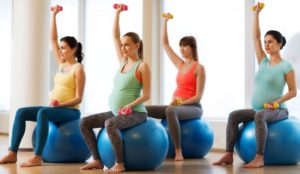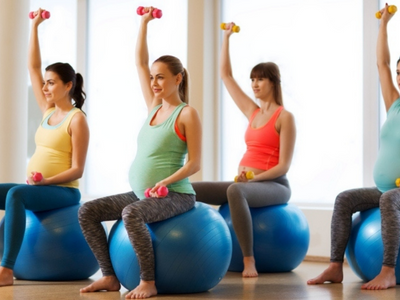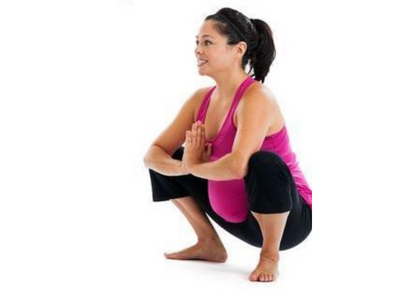Safely exercising during pregnancy has more perks than dangers. I have mentioned in almost all my pre and postnatal articles, that when u are able to exercise throughout your pregnancy, it prepares your body well for childbirth as well as for postpartum issues you may face. In this article, I will be covering a range of Do’s and Dont’s in terms during pregnancy to exercise safely.
ACTIVITIES TO AVOID:-
Activities that do not impact your and your baby’s health should only be taken up. For instance, Avoid activities where you could take a hard fall. You may have safely ridden a bike in the first trimester, but why risk it now? If bike riding is a critical part of your exercise routine, choose a stationary bike from here on out.
If you’re an avid skier, stick to the bunny slope, or switch to cross-country. Anything that reduces potential oxygen flow, like scuba diving or activities at high elevation, isn’t safe.
You should stop exercising if you:
- feel queasy
- get too hot
- feel dehydrated
- experience any vaginal discharge, bleeding, or abdominal or pelvic pain
SYMPTOMS TO STOP EXERCISING DURING PREGNANCY
- Vaginal bleeding
- Dyspnea prior to exertion
- Dizziness
- Heachache
- Chest pain
- Muscle weakness
- Calf pain or swelling (need to rule out thrombophlebitis)
- Preterm labor
- Decreased fetal movement
- Amniotic fluid leakage
CONTRAINDICATIONS FOR EXERCISES DURING PREGNANCY:-
| Relative | Absolute |
| · Severe trauma
· Unevaluated maternal cardiac dysrhythma · Chronic bronchitis · Poorly controlled type I diabetes · Extreme morbid obesity · Extreme underweight (BMI<12) · History of extremely sedentary lifestyle · Intrauterine growth restriction in current pregnancy · Poorly controlled hypertension · Orthopedic limitations · Poorly controlled seizure disorder · Poorly controlled hyperthyroidism · Heavy smoker |
· Hemodynamically significant heart disease
· Restrictive lung disease · Incompetent cervic/cerclage · Multiple gestation at risk for premature labor · Persistent second- or third-trimester bleeding · Placenta previa after 26 weeks of gestation · Premature labor during current pregnancy · Ruptured membranes · Preeclampsia/pregnancy-induced hypertension |
DEHYDRATION DUE TO EXERCISES:-
Dehydration occurs when your body loses fluids faster than you take them in. It can make it harder for the body to perform its normal functions, leading to discomfort caused by constipation and swelling. During pregnancy, inadequate fluid intake over longer periods of time can also lead to low amniotic fluid, and it may trigger Braxton-Hicks contractions, a type of contraction that occurs during pregnancy. It can also lead to more serious complications such as birth defects.
As a mom-to-be, you and your baby require more water than the average person. This is because water takes on additional roles during pregnancy. For example, water is an essential part of the placenta, which delivers nutrients to your growing baby, and the amniotic sac, which cushions your baby throughout pregnancy.
TIPS TO AVOID DEHYDRATION:-
-
Have enough fluids during the day (water, juices, green tea, soups)
-
remembers basic signs of dehydration is dry throat, if you feel your throat has gone dry, lips are chapped. go and have a glass of water.
-
If you exercise regularly have small sips of water before, during, and after the workout. but not too much otherwise it may cause nausea.
-
Do not exercise outdoors during the hot time of the day, exercise either early morning or in the evenings after sunset.
-
Avoid vigorous exercises on extremely hot days, take it easy.
-
My personal favorite, is having fresh coconut water in the morning after the exercise or walk. it is perfect drink to rehydrate.
MATERNAL HYPOGLYCAEMIA:-
Pregnancy requires 300 kcal extra to maintain metabolic homeostasis. Calories need to match the exercise. Maternal hypoglycemia may be associated with energetic exercise, in the last trimester of pregnancy. The reduction in blood glucose may result from increased glucose uptake by the fetus and mother. To avoid this, women should take more carbohydrates with food, or more fluid drinks like fruit juice, coconut water before exercising.
YOGA ASANAS TO AVOID:-
No inverted poses (where your feet are over your head), poses where you’re on your back, or backbends. If anything doesn’t feel right, don’t do it — you’ve got the rest of your life to learn challenging yoga poses.
You should avoid Bikram, or “hot,” yoga during pregnancy. These classes generally heat the exercise room to 104ºF (40ºC). Getting your body temperature above 102ºF (39ºC) can endanger your baby or cause you to get dehydrated.
SPORTS TO AVOID:-
Woman should not scuba dive during pregnancy, this is because the fetus is not protected from compression sickness and gas embolism.
Women should choose activities that will minimize the risk of loss balance and fetal trauma for example horseback riding, downhill skiing, ice hockey, gymnastics, and cycling.
When the conditions are normal moderate exercise altitudes up to 1,800 to 2,500 m does not appear to be dangerous for the maternal or fetal well-being (Davies et al. 2003).
RUNNING DURING PREGNANCY:-
If you were a runner before getting pregnant or safely ran in your first trimester, you probably can continue to follow your safe running routine. Remember that your body is changing. Specifically, your center of gravity is shifting.
This means you should be careful not to fall. Stick to flat running tracks, or run on a treadmill with safety bars. Give up the trails and broken sidewalks for now.
If you weren’t a runner before, now’s not the time to start.
If you feel joint or back pain, or any other concerning symptoms, stop running.
LIFTING WEIGHTS DURING PREGNANCY:-
All pregnant women, regardless of whether or not they lift weights, are at an increased risk for musculoskeletal injury. This is because the placenta produces a hormone called relaxin, which relaxes the body’s joints. This is critical since the pelvis needs to expand to accommodate the growing uterus and baby, and to allow the baby to pass through the birth canal during delivery.
weight lifting is completely safe during pregnancy, as long as it is done in moderation. He also recommends sticking to weights under 30 pounds
“Think bent over rows using a bench support and dumbells instead of a barbell and bending at the hips.”
if you can hold a casual conversation during your workout, while feeling adequately challenged, you’re probably okay. Aim for breathing hard, but not feeling out of breath, and give yourself plenty of rest breaks for recovery during and between workouts.
ABDOMINAL EXERCISES DURING PREGNANCY:-
Myth: Stop training abs or you’ll risk separating your abdominal wall.
Most article talk about stop abs completely, but as an experienced physio , I recommend doing certain abdomainal exercises for the following benefits:-
- Prevents excessive arching of the back, thereby reducing chances of back pain in post partun period.
- Improves core strength and reduces chances of Diastasis Recti
- More stability; during pregnancy our joints are more mobile making the body more flexible and prone to aches and pains, when u do weights, it just adds to the sense of stability and prevents these aches and pains.
Abdominal separation is a real thing that many women in pregnancy experience. It’s called diastasis recti (DR). DR occurs because of the growing fetus pressing onto your abdominal wall. Your rectus abdominals, the “6-pack” muscles, will stretch because of this, and the connective tissue holding them together can get very thin and soft.
There are specific core exercises that you should not do that can increase the DR — for example, sit-ups, crunches, and front planks.
What can you do? Half and tall kneeling positions, Pallof presses, dead bugs, farmer carries, diaphragmatic breathing exercises, and pelvic floor exercises.
Remember to not breath hold during these exercises.







